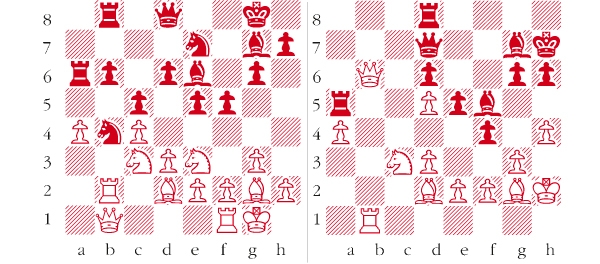The English Opening was essentially invented by Howard Staunton in the mid-19th century. The strategic point is to commence with c4, then fianchetto White’s king’s bishop and eventually to strike at the central and queenside light squares. This week’s game is a perfect example of this strategy in action.
White’s light-squared bishop dominates proceedings and White combines this with pressure along the b-file in order to increase his domination. A sacrifice of rook for knight then emphasises his complete control of the board. The game is taken from an illuminating new book from Steve Giddins, Move by Move: The English (Everyman Chess).
Andersson-Seirawan: Linares 1983; English Opening
1 Nf3 c5 2 c4 Nc6 3 g3 g6 4 Bg2 Bg7 5 Nc3 e5 6 0-0 d6 7 a3 Nge7 8 Rb1 Possible here is the gambit 8 b4. If Black takes the pawn by 8 … cxb4 9 axb4 Nxb4 then White gets good compensation after 10 Ba3 Nec6 11 Qa4. However, as well as simply ignoring the gambit by 8 … 0-0, when play will usually transpose to regular lines with 9 Rb1, Black can also play the sharp 8 … e4. 8 … a5 9 d3 0-0 10 Bg5 f6 11 Be3 Be6 12 Ne1 Qd7 13 Nc2 White is now ready to advance b4. 13 … a4 White often plays b3 to stop this crippling of his queenside pawns, but here things are not so clear. With Black’s pawn on c5, the opening of the b-file will leave his b-pawn backward and exposed to attack. 14 b3 axb3 15 Rxb3 Rfb8 16 Qb1 Ra6 17 Rb6 Qc7 18 Rb2 b6 19 Bd2 The bishop has done its job on e3 — it has prevented the advance … d5. Now this is no longer threatened, so the bishop makes way for the knight to come to e3, pointing at d5. 19 … Qd8 20 a4 f5 21 Ne3 Nb4 (see diagram 1) 22 Rxb4 White makes a positional sacrifice of rook for knight. He gets one pawn immediately, and he also eliminates the knight, that was plugging up the b-file. Such positional exchange sacrifices have always been a feature of Andersson’s play. 22 … cxb4 23 Qxb4 Qd7 24 Rb1 Rd8 25 Qb3 Putting another guard on d5. He does not want to let Black get in the advance … d6-d5. 25 … Kh8 26 Nc2 h6 27 Nb4 Re-establishing the knight in striking distance of d5, whilst at the same time driving the black rook off the defence of the b6-pawn. 27 … Ra5 28 h4 f4 29 Kh2 Kh7 30 Nbd5 Having played beautifully up to now, Andersson loses the thread. The other knight jump was much stronger: 30 Ncd5 Nxd5 31 cxd5 Bg4 32 Nc6 etc. 30 … Nxd5 31 cxd5 Bf5 32 Qxb6 (see diagram 2) 32 … Rc5 32 … Raa8 was a much tougher defence, with the point that 33 a5 Rdb8 34 Qc6 Qa7 is okay for Black. 33 a5 Rdc8 34 Rb3 fxg3+ 35 fxg3 e4 36 Nxe4 Rc2 37 Qe3 Qa4 Black throws his pieces forward, but Andersson now has it all under control again. 38 Rb7 With the threat 39 Qxh6+. 38 … R8c7 39 Rxc7 Rxc7 40 Nxd6 Rc2 41 Nxf5 Black resigns





Comments